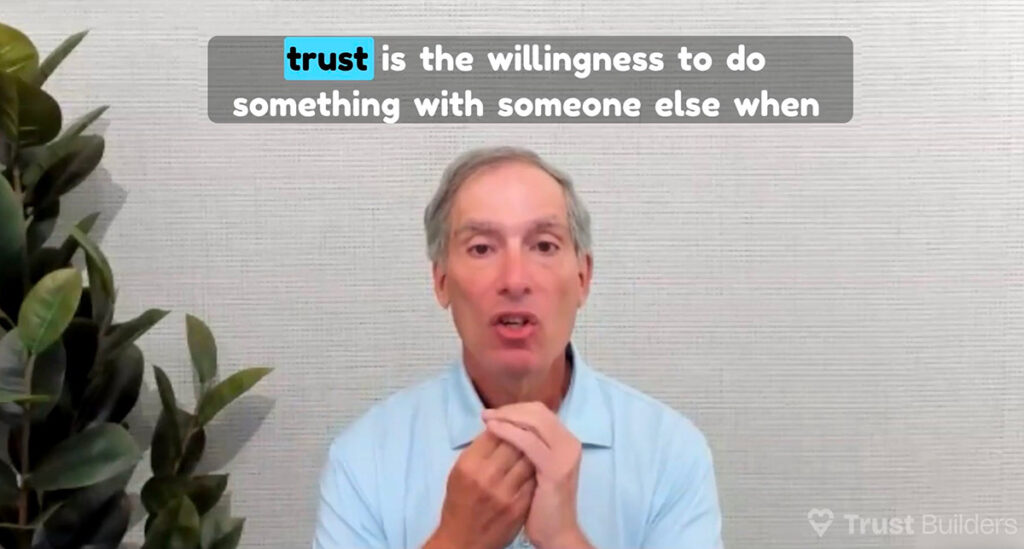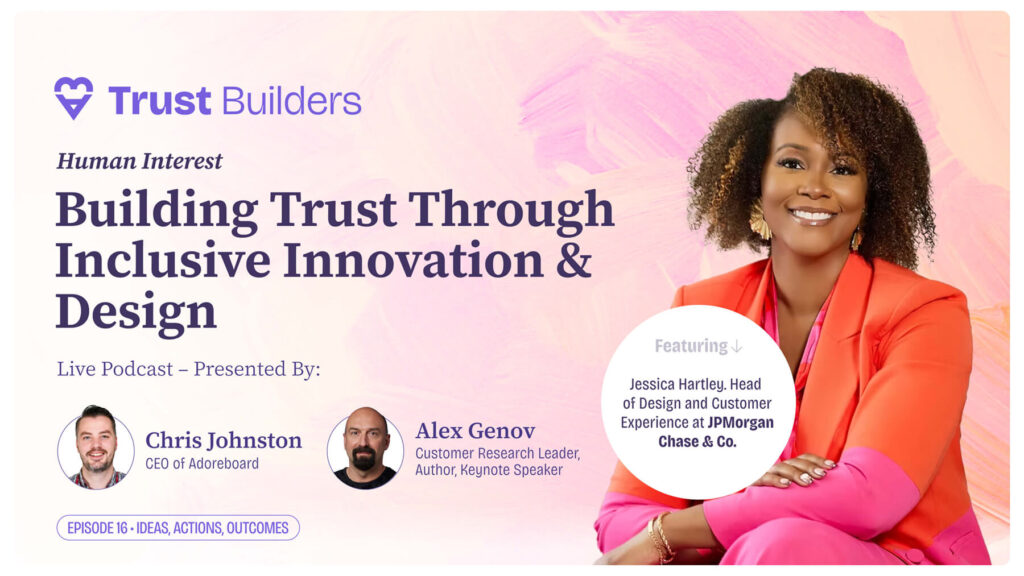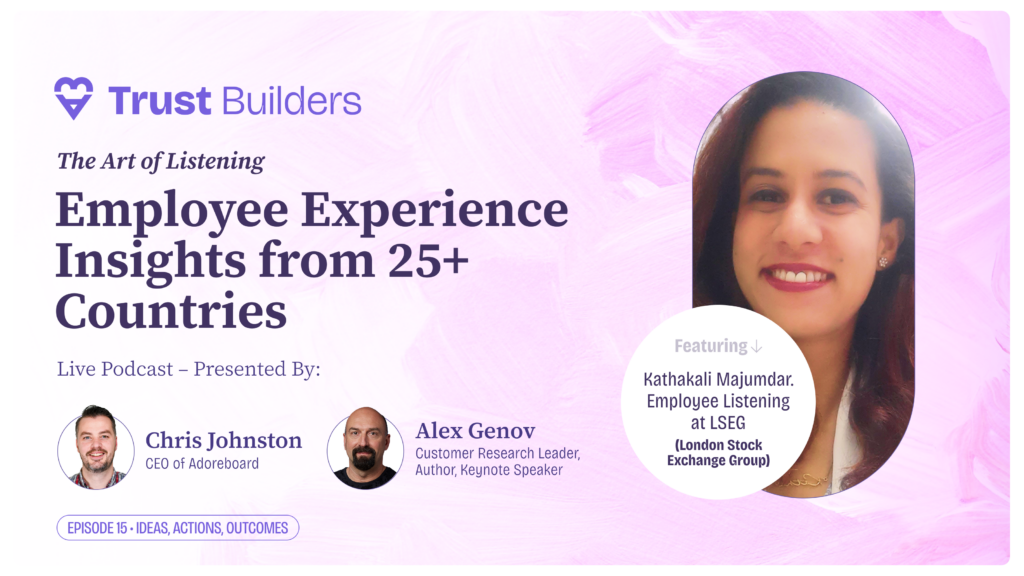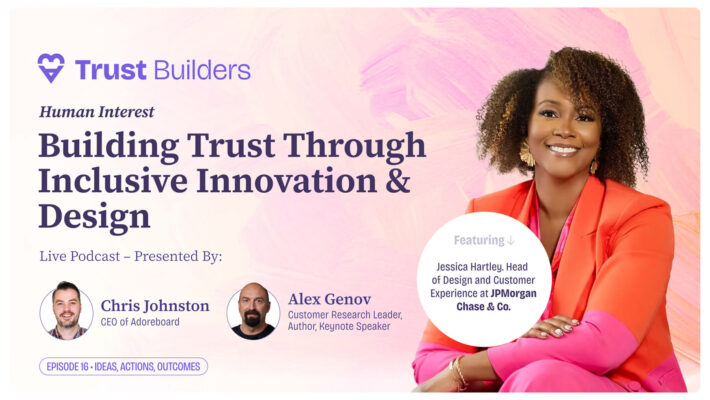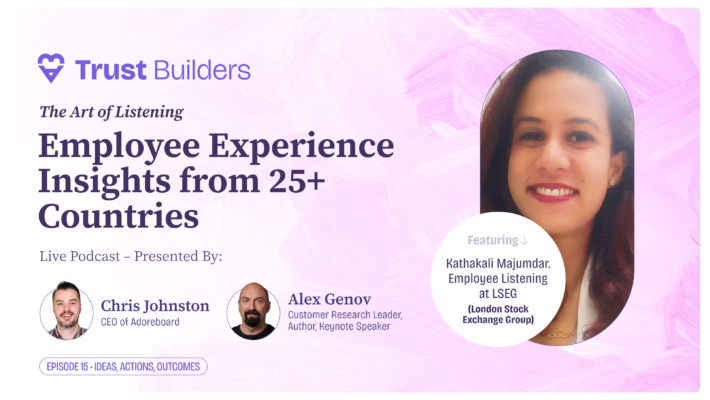Often referred to as the “Godfather of Customer Experience”, Bruce Temkin led Qualtrics’ XM Institute for 5 years, spent over a decade as a VP and Principal Analyst at Forrester and co-founded the Customer Experience Professionals Association (CXPA).
During a Trust Builders podcast episode with Chris Johnston and Alex Genov he shared his many years of insights and a few golden nuggets around trust and the great opportunity for experience professionals…
Bruce has been analysing trust primarily in the US since 2012. He begins by telling us the overall level of trust today is almost the same as it was in 2012. However, there have been fluctuations, with the highest level of trust in 2017, followed by a decline, hitting the lowest in 2020 during the COVID pandemic.
Bruce Temkin’s definition of trust
Bruce defines trust as “the willingness to engage with someone when you can’t assure the outcome”. He goes on to say that if the outcome is known then trust wouldn’t be necessary.
Without trust, customers won’t believe in your messaging, meaning they won’t hear about your new products or buy them, and they are likely to return items because they don’t trust they will work as promised.
Trust deficit and the opportunity on hand
Trust is critical not just at the individual level but also within the broader business environment. Research indicates a significant trust deficit in organisations, with only 70% of the US workforce trusting their employers.
This poses a challenge but also an opportunity for organisations to build and maintain trust.
That’s right, you don’t have to be perfect to win the trust wars— you just have to be better than the rest. And as it turns out, the rest ain’t that good!
How do we measure trust and determine the value at risk?
In simple terms, trust is either present or it is not. Yes, it’s more nuanced than that but to keep things simple let’s just assume it either exists or it doesn’t.
High levels of trust equates to increased engagement and positive, profitable behaviours, such as willingness to try new products, advocacy and repeat purchases.
On the other extreme, zero trust results people don’t believe any of your messaging so they don’t even hear about your new products, nevermind buy it!
This creates two distinct relationship trajectories for your customers, employees, patient etc: one where trust is present and one where it is absent.
Follow each journey out into the future and map out an estimated dollar value.
The spread between these trajectories at whatever point in time you choose represents the value at risk.
Wise self interest & operational trust
One of the key areas Bruce, Chris and Alex discussed was the intrinsic link between trust and risk.
Trust is built when organizations actively work to reduce the risk for their customers, rather than just focusing on minimizing their own risks. This balance, often referred to as “wise self-interest,” means taking steps that make customers feel understood and valued.
Balancing internal operational needs with actions that reduce risks for customers will naturally foster a reciprocal relationship of trust.
Practical steps to build Trust
So, how can businesses effectively build Trust with customers?
- Be Transparent and Consistent: Open communication and consistency in actions builds trust. It’s essential for businesses to show their human side, admit mistakes, and take responsibility.
- Measure and Adapt: Regularly assess the level of trust through customer feedback and adapt strategies accordingly. Without a specific trust metric, qualitative and quantitative measures like Net Promoter Score (NPS) can be a good starting point.
- Embrace Hospitality: Invest in customer experiences that go above and beyond mere functional service. This means creating moments that truly delight and surprise customers, strengthening the emotional bond.
The key takeaway is that trust is not just about mitigating risks but about creating genuine, long-lasting relationships (and thus profitability) with customers.
By focusing on transparency, reducing uncertainty, and exceeding customer expectations, companies can build a solid foundation of trust that drives sustained success and thus impacts bottom line.
Bruce Temkin was special guest for Episode 2 of Trust Builders in March 2024 with Chris Johnston and Alex Genov. View all Trust Builders podcasts here.
